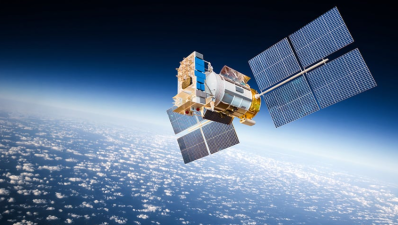
If satellite internet is a technological race under the stars, then 2025 is undoubtedly a dazzling meteor. This field has moved from wild imagination to a time of solid implementation. With the accelerated development of a global low-orbit satellite network and the comprehensive commercialization of the BeiDou-3 satellite system, the "integrated space-air-ground" architecture is entering its golden age.
Not only are investors flocking to this initiative, but a host of technology companies are also forging ahead in this arena.
Satellite Internet Overview
Satellite internet specifically refers to high-bandwidth, low-latency satellite data communication networks that provide internet services. Satellites are categorized by application into three main types: communications, navigation, and remote sensing. Communication satellites are the most widely used. The satellite communication network architecture primarily consists of three components: the space segment (satellites), the ground segment (ground gateways), and the user segment (user terminals). Characteristics and Applications of Satellite Internet.

Satellite Internet has the following four key features:
- Wide Area Coverage
Leveraging LEO, MEO, and GEO satellite constellations, it enables seamless global communications, unrestricted by geographical conditions, and can provide reliable communications services to areas unserved by terrestrial networks (such as remote land, ocean, and air).
- High-Throughput Communications
High-Throughput Satellite (HTS) technology is maturing, and Ka/Ku/V-band communications can achieve Gbps-level data rates, enhancing user experience.
- Low Latency
LEO satellites offer a round-trip signal latency of approximately 20-50 ms, significantly lower than GEO satellites (>500 ms), enabling real-time services such as telemedicine and high-definition video conferencing.
- Flexible Deployment
Compared to traditional communication methods such as laying fiber optic cables, satellite Internet can quickly restore services when ground infrastructure is damaged. Its deployment is relatively quick, ensuring continuous and reliable communications, making it suitable for scenarios such as emergency communications and disaster recovery.
In 2024, the total number of spacecraft in orbit worldwide exceeded 10,000, reaching 11,605, marking a new peak in satellite deployment. The United States, with 8,813 spacecraft in orbit, accounts for 75.9% of the global total, maintaining its leading position. China's number of spacecraft in orbit reached 1,094, accounting for 9.4% of the global total, leaping into second place.

Satellite internet boasts irreplaceable coverage advantages, complementing 5G and providing a preliminary exploration of 6G
- Satellite internet complements 5G's low-density user access scenarios, complementing 5G's strengths.
For urban users, 5G's advantages of low cost, high bandwidth, and compact terminals remain significant, leaving satellite internet unavailable for replacement. However, its advantages are less pronounced in some latency-sensitive industries.
However, for users in remote areas, passengers on aircraft and ships, field expeditions, or in scenarios such as mining, oil and gas extraction, freight traffic tracking, and environmental monitoring, satellite internet's global coverage and cost advantages cannot be underestimated. Low-orbit satellite communications offer broad market prospects for applications targeting specific regions and user groups, especially in the 5G era, where the digital divide persists. Satellite internet is a low-cost tool capable of providing comprehensive coverage.
- Low-orbit satellite internet can draw on the technical framework of terrestrial 5G systems and reuse/be compatible with terrestrial 5G technical standards.
5G has officially entered commercial use and is highly mature. Low-orbit satellite systems can reuse the technologies and features of 5G standards. Architecturally, satellite internet can be considered a form of 5G access network, sharing a core network with the ground. Onboard, signal processing, link layer, and network layer switching and routing modules are deployed to implement air interface protocol processing and routing forwarding. Furthermore, satellite internet ground equipment can leverage existing 5G baseband processing capabilities and related terminal chipsets, shortening R&D cycles and reducing R&D costs.
